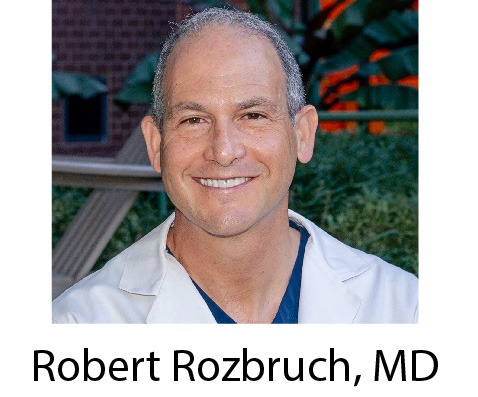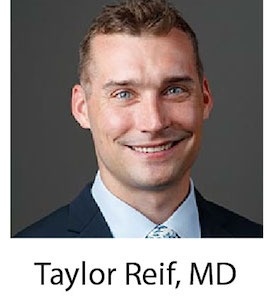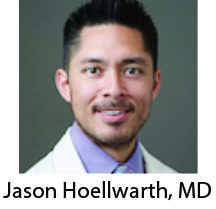Mission:
We believe that there is a solution to everyone’s skeletal problems, including limb length discrepancy and limb deformity. By engaging our patients in a detailed discussion and conducting a thorough exam we arrive at a sophisticated diagnosis. Our skill with a variety of bone reconstruction techniques enables us to sculpt bone and even create bone where there was none. Our synergetic relationship with the Hospital for Special Surgery provides access to state-of-the-art orthopaedic equipment and to other experts in bone health.
Measured innovation best describes our path and is at the core of our success. Our dedication to research and education provides us with constant feedback from patients and colleagues challenging our methods and ensuring the highest quality. Specific techniques that we provide include: joint preservation, joint distraction, osteotomy, bone lengthening, bone transport, internal lengthening, integrated fixation, external fixation, limb reconstruction, foot and ankle deformity, Ilizarov reconstruction, knock knee and bowleg realignment, knee and foot rotational correction, arthroscopy, and replacement.
Patients come to HSS to receive the best care available, and it is our mission to ensure each patient we meet gets “the best.” To that end we dedicate our practice to providing services that are within our expertise and referring patients to other master physicians for procedures we do not perform. This ensures the highest standard of patient care.
History:
Limb lengthening has proven to be a very powerful and effective procedure.
Limb lengthening is possible and has been performed successfully for about 50 years in Kurgan, Russia. Gavriil A. Ilizarov developed the concept in 1951 after seeing many WWII veterans who had leg fractures that had not healed (non-unions).
Ilizarov first developed an external fixation frame that was placed around the leg. Knowing that compression of the fracture would help stimulate bone healing, he built a frame that had this capacity. He instructed a patient to gradually compress the non-union by turning a rod. However, the patient turned the rod the wrong way and caused distraction (separation) of the fracture. Ilizarov noticed that new bone had formed in the gap between the bone ends. This was the beginning of much research and development that showed that limb lengthening was possible, safe and effective.
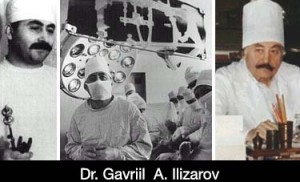
Ilizarov and his colleagues performed thousands of arm and leg lengthening procedures in Kurgan, Russia. Russian politics, however, made education and communication with the Western world very difficult. Finally, Italian surgeons started performing and improving the procedure in the early 1980s and a large center soon developed in Lecco, Italy. The first limb lengthening case in the United States was performed in 1988. At first, there was much resistance and skepticism within the U.S. orthopaedic community, but limb lengthening has proven to be a very powerful and effective procedure.
Limb lengthening and reconstruction techniques can be used to replace missing bone and lengthen and/or straighten deformed bone segments. The procedures may be performed on both children and adults who have limb length discrepancies, or limb deformities such as bow legs or knock knees, due to birth defects, diseases or injuries. The limb lengthening and limb deformity correction process works on the principle of distraction osteogenesis. This is a revolutionary concept that reverses the long-held belief that bone cannot be regenerated. In this process, a bone that has been cut during surgery can be gradually distracted (pulled apart), leading to new bone formation (osteogenesis) at the site of the lengthening. In this way, bone segments can be lengthened by 15 to 100 percent of their original length. We use a variety of techniques, including the use of monolateral (one-sided) and circular external fixation devices, to correct angular deformities as well as limb length discrepancies.
We provide opportunities for individuals who previously had no treatment alternatives.
The regenerated bone is normal and does not wear out. The muscles, nerves and blood vessels grow in response to the slow stretch like they do during a growth spurt or in pregnancy. The actual procedure is minimally invasive and requires only one or two nights in the hospital. Patients aren’t in much pain since the distraction is so gradual and patients can continue to walk during the treatment.
Children and adults can be appropriate candidates for the procedure. Children with congenital deformities such as fibular hemimelia, congenital short femur, or hemiatrophy will often have unequal leg length and this may be associated with deformity. Many adults have had this condition since childhood and have developed back pain and hip arthritis from the leg length discrepancy. Growth plate fractures and bone infections in children can cause stunting of growth that results in discrepancy. And yet, limb lengthening is within their reach.
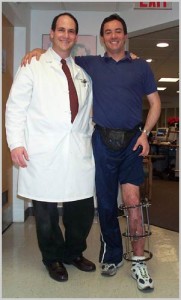
Following trauma, bones can heal in a shortened and deformed position (mal-union). Sometimes the bone can even remain unhealed (non-union). Limb lengthening procedures address all of these issues. We have been able to successfully correct large deformities and equalize limbs with discrepancies of several inches. A segment of bone can be missing after a bone tumor, bone infection or severe fracture. We can transport new bone to fill in this defect.
Short stature can be very disabling in patients with dwarfism, for example. Leg lengthening can change their lives dramatically. We can lengthen both legs simultaneously to increase stature. We have been able to lengthen achondroplastic dwarf patients 12 inches in the legs and five inches in the arms. This allows them to function more independently and be able to reach the telephone, toilet or gas pedal, for example.
Young adult patients with leg deformities are at risk for developing arthritis as a result of their limb malalignment. These same techniques can be used to correct severe deformities safely and avert the need for joint replacement.
Please visit:

